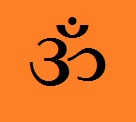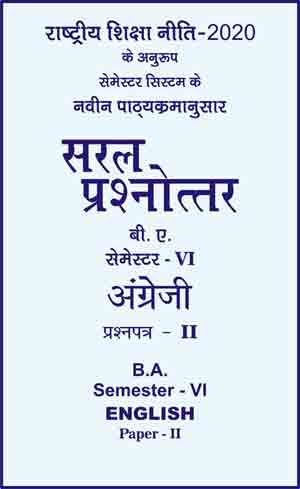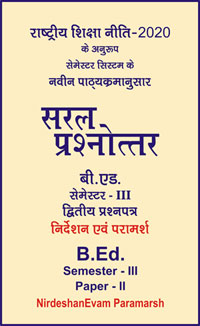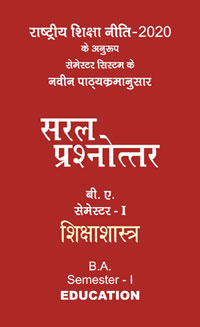|
बी ए - एम ए >> बीए सेमेस्टर 6 अंग्रेजी पेपर 2 बीए सेमेस्टर 6 अंग्रेजी पेपर 2सरल प्रश्नोत्तर समूह
|
|
||||||
बीए सेमेस्टर 6 अंग्रेजी पेपर 2
Objective Type Questions
For each of the following questions, four alternatives are given for the answer. Only one of them is correct. Choose the correct alternative.
- What is the primary function of mass media in society?
(a) Entertainment only
(b) Dissemination of information, education, and entertainment
(c) Political propaganda
(d) Economic development -
Which of these societies is characterized as homogeneous?
(a) United States
(b) Japan
(c) India
(d) Brazil -
What significant role did mass media play during World War I?
(a) Broadcasting peace treaties
(b) Entertainment for troops
(c) Galvanizing national support for the war efforts
(d) Reporting war casualties -
The Penny Press was significant in the history of mass media because it:
(a) Introduced color printing
(b) Made newspapers more affordable
(c) Focused on celebrity news
(d) Was the first digital publication -
How did the Nazi regime use mass media?
(a) For economic development
(b) As a propaganda tool
(c) To promote international peace
(d) To spread scientific knowledge -
In a democratic society, media is often referred to as the fourth pillar due to its role in:
(a) Providing entertainment
(b) Ensuring government transparency and accountability
(c) Promoting commercial products
(d) Broadcasting sports events -
The Emergency in India from 1975 to 1977 is an example of:
(a) Media’s symbolic resistance to government overreach
(b) The media’s lack of influence on politics
(c) The successful implementation of media policies
(d) A period of extensive media freedom -
According to Marshall McLuhan, people’s awareness of media is like a fish’s recognition of:
(a) Food
(b) Water
(c) Light
(d) Other fish -
Who argued that the press reflects the social and political milieu it operates within?
(a) Caren J. Deming and Samuel L. Becker
(b) Fred S. Siebert, Theodore Peterson, and Wilbur Schramm
(c) Daniel C. Hallin and Paolo Mancini
(d) Stanley J. Baran -
Mass media in heterogeneous societies like the United States is marked by :
(a) A single dominant culture
(b) A mix of different races, cultures, and religions
(c) Uniformity in media content
(d) Only English language media -
The Jat community’s agitation in Haryana in 2016 is an example of media coverage reflecting :
(a) Government policies
(b) Societal actions and consequences
(c) International events
(d) Technological advancements -
Which era exemplified the media’s burgeoning power with the rise of the press and radio ?
(a) The Renaissance
(b) World War II
(c) World War I
(d) The Industrial Revolution -
The concept of media literacy involves understanding :
(a) Only the technical aspects of media
(b) The influence of media on society and vice versa
(c) The history of media alone
(d) How to create media content -
In “Four Theories of the Press,” what do the authors suggest about the media ?
(a) It is independent of societal and political influences
(b) It should only focus on entertainment
(c) It inevitably reflects the society it represents
(d) It is irrelevant in modern society -
Matrimonial advertisements in mainstream newspapers often categorize by gender and caste, exemplifying media’s role in :
(a) Entertainment
(b) Perpetuating existing social structures
(c) Providing unbiased information
(d) Promoting technological advancements -
The expansion of media post-World War II impacted :
(a) Only the entertainment industry
(b) Primarily economic policies
(c) All aspects of life, including societal development
(d) Solely political scenarios -
What is a primary criticism of modern news media ?
(a) Its focus on educational content
(b) Being a commercial product with explicit violence
(c) Ignoring political events
(d) Overemphasis on historical information -
In “Comparing Media Systems: Three Models of Media and Politics,” Hallin and Mancini suggest that :
(a) Media is unaffected by political party systems
(b) Understanding media requires considering broader societal elements
(c) Economic interests have no impact on media
(d) Media should avoid covering civil society -
What role does communication serve within a society ?
(a) A minor role in cultural development
(b) The fundamental connective thread
(c) Solely for entertainment purposes
(d) Limited to technological advancements -
The portrayal of caste-based divisions in Indian media is an example of :
(a) Media’s educational role
(b) Media’s entertainment value
(c) Media reflecting societal divisions
(d) Media’s focus on international issues -
Mass media’s role as democracy’s sentinel implies that it :
(a) Only reports on governmental activities
(b) Serves as a watchdog, holding power accountable
(c) Focuses solely on democratic countries
(d) Avoids political reporting -
Media’s impact on daily life is often viewed as :
(a) Negligible
(b) Only positive
(c) Varied, ranging from immense to skeptical
(d) Solely negative -
The Indian Express’s act of leaving editorial spaces blank during the Emergency in India was a protest against :
(a) Economic policies
(b) Censorship
(c) Technological limitations
(d) Editorial disagreements -
What is a defining characteristic of a homogeneous society ?
(a) Diversity in religious beliefs
(b) Commonality of values, language, and ethnicity
(c) Multiple lingua francas
(d) Varied political systems - The advent of mass media has mirrored society in its :
(a) Economic growth only
(b) Technological advancements
(c) News and entertainment content
(d) Political neutrality
|
|||||

 i
i 









